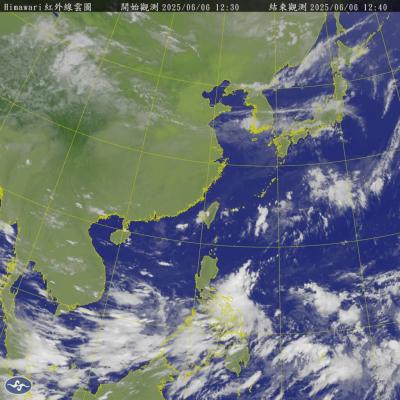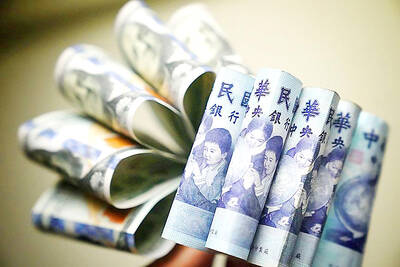The average price of milkfish reached a new high last month, compared with the same period over the past three years, but prices should stabilize by the end of the year, the Fisheries Agency said.
Milkfish cost and average of NT$111 per kilogram last month, the agency’s Aquaculture Fisheries Division Director-General Chen Chien-you (陳建佑) said on Tuesday.
Chen denied media reports that the aquaculture and green energy coexistence policy was the primary reason for the price hike.

Photo: Chung Li-hua, Taipei Times
In 2021, 8,245 hectares were used to raise milkfish and 7,527 hectares were used last year, he said.
The annual decrease of 718 hectares, or 8.7 percent, can be attributed to farmers opting to raise other types of fish, Chen said.
In comparison, the land “lost” to the policy was only at 312 hectares, or 3.8 percent, he said.
Fish farmers tend to adjust how many fish they raise based on shifts in the market over the previous and current year, the environment of their fish farms and what kind of technology is being employed or has been newly introduced, he said.
While the total area of fish ponds has been decreasing over the years, fish farmers sometimes renovate their ponds or leave a pond empty for a year, also driving up fish prices, Chen said.
The agency said that about 80 percent of milkfish farmers raise the species all year round.
About 10 percent switch to other species, primarily clams and tilapia, while the other 10 percent “rest” their ponds for a year, or renovate or clean them, the agency said.
Fish farmers are starting to raise milkfish again due to the increase in prices, the agency said, adding that it has recorded a 4.8 percent increase in people raising milkfish compared with the whole of last year.
In the first quarter of this year, 1,355 tonnes of milkfish were exported, up 18.2 percent from a year earlier, the agency said.

STAY AWAY: An official said people should avoid disturbing snakes, as most do not actively attack humans, but would react defensively if threatened Taitung County authorities yesterday urged the public to stay vigilant and avoid disturbing snakes in the wild, following five reported snakebite cases in the county so far this year. Taitung County Fire Department secretary Lin Chien-cheng (林建誠) said two of the cases were in Donghe Township (東河) and involved the Taiwan habus, one person was bit by a Chinese pit viper near the South Link Railway and the remaining two were caused by unidentified snakes. He advised residents near fields to be cautious of snakes hiding in shady indoor areas, especially when entering or leaving their homes at night. In case of a

A tropical disturbance off the southeastern coast of the Philippines might become the first typhoon of the western Pacific typhoon season, the Central Weather Administration (CWA) said. The system lacks a visible center and how it would develop is only likely to become clear on Sunday or Monday, the CWA said, adding that it was not yet possible to forecast the potential typhoon's effect on Taiwan. The American Meteorological Society defines a tropical disturbance as a system made up of showers and thunderstorms that lasts for at least 24 hours and does not have closed wind circulation.

ENERGY RESILIENCE: Although Alaska is open for investments, Taiwan is sourcing its gas from the Middle East, and the sea routes carry risks, Ho Cheng-hui said US government officials’ high-profile reception of a Taiwanese representative at the Alaska Sustainable Energy Conference indicated the emergence of an Indo-Pacific energy resilience alliance, an academic said. Presidential Office Secretary-General Pan Men-an (潘孟安) attended the conference in Alaska on Thursday last week at the invitation of the US government. Pan visited oil and gas facilities with senior US officials, including US Secretary of the Interior Doug Burgum, US Secretary of Energy Chris Wright, Alaska Governor Mike Dunleavy and US Senator Daniel Sullivan. Pan attending the conference on behalf of President William Lai (賴清德) shows a significant elevation in diplomatic representation,

Credit departments of farmers’ and fishers’ associations blocked a total of more than NT$180 million (US$6.01 million) from being lost to scams last year, National Police Agency (NPA) data showed. The Agricultural Finance Agency (AFA) said last week that staff of farmers’ and fishers’ associations’ credit departments are required to implement fraud prevention measures when they serve clients at the counter. They would ask clients about personal financial management activities whenever they suspect there might be a fraud situation, and would immediately report the incident to local authorities, which would send police officers to the site to help, it said. NPA data showed